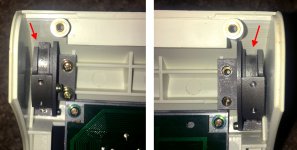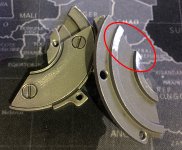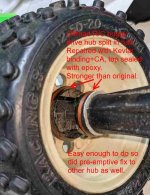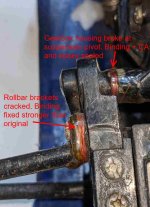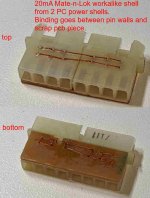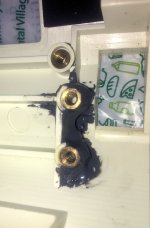Nice. My question is how do you know it's stronger than the original? How would you measure that. Not being coy. Really curious.
That's a good question, and one I considered when making that claim, which I would like to justify as follows. In the case of the drill pinion, cracking axially was the initial failure threshold. Once bound, it is constrained so tightly by (for all intents) by an unbreakable surrounding.
The next stage of failure I thought was for a) a pinion tooth to break off or b) the pinion spline to cam out on the chuck mandrel. It turned out it was neither of those. Now, when the drillbit jams the main bevel's axle has enough slop for the teeth to slip. So for now I apply pressure on the handcrank gear right at the mesh point, and that works ok. For the wheel hub, much the same thing. It will cam out on the axle or the hub pins that engage the rim will fail.
I first became an enthusiast of binding repairs after buying a book many years ago on how to build a model turbojet engine from scratch ('Gas Turbine Engines for Model Aircraft' by
Kurt Schreckling ISBN 0 9510589 1 6). In it, full engineering drawings and how to build commentary were provided.
The engine had an unconventional construction arrangement of the compressor. Rather than being milled from a piece of say 6061 aluminium, it was instead made from plywood. Yes, an 80mm diameter centrifugal jet engine fan spinning at 85000 rpm made of plywood?! It was able to withstand the stress of flying apart because the circumference was wound with carbon fibre filament, glued with CA. I was sold on binding using modern materials from that point on.
One last thing, bringing the topic back to vintage computers.
There have been posts on VCF about old keyboards failing because the square key stems have cracked at the corners. People have tried gluing the crack but there is just nowhere near enough surface area to bond, and the high-impact plastic itself may not take glue keying to its surface very well either. A further impediment is the key stem has to fit back in the key housing and move freely, so any repair needs to have a very low profile.
So I think it is completely within the bounds of possibility that an attempt at repairing these key stems by binding could be tried. It might involve setting up the key / key stem on a square mandrel and milling say 0.2mm deep channels circumferentially on the outer 4 sides, then taking the Kevlar thread and splitting it into just a few filaments to reduce the bulk before winding under tension and finishing with CA alone, applied with a sharpened toothpick.
I feel confident it can be done so if anyone has some of those 'unrepairable' broken key stems they'd be willing to send me I'd be happy to attempt to repair them for you.
